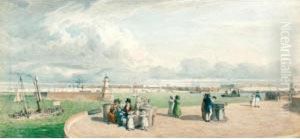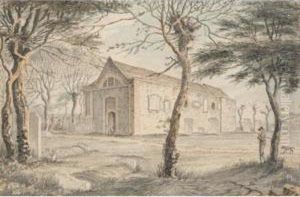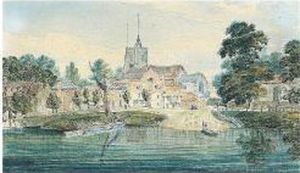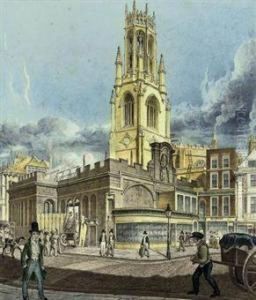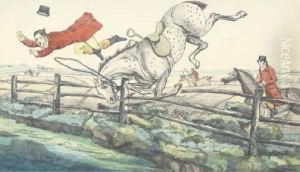Robert Blemmell Schnebbelie Paintings
Robert Blemmell Schnebbelie was a British artist and draftsman known primarily for his topographical and antiquarian works. He was born in 1781 in London, England, into an artistic family; his father, Jacob Schnebbelie, was also a notable artist who served as the official draftsman to the Society of Antiquaries in London. Following in his father's footsteps, Robert developed a keen interest in historic buildings, monuments, and landscapes, which would become the central subjects of his artistic career.
Schnebbelie's work was characterized by its detailed and accurate representation of architectural and archaeological subjects. He had a particular talent for capturing the intricacies of Gothic architecture and the grandeur of medieval ruins, which were popular subjects during the romantic period in Britain. His drawings and watercolors were often used as illustrations for books on history and topography, contributing to the visual documentation of Britain's heritage during the 19th century.
Despite his skill and the niche he carved out for himself in the world of antiquarian illustration, Schnebbelie did not achieve significant fame during his lifetime. His work was appreciated among scholars and enthusiasts of British history and architecture, but he did not enjoy the wider recognition of some of his contemporaries. Nevertheless, his contributions to the illustration of historical and architectural works were valuable to the preservation of knowledge about Britain’s past.
Schnebbelie continued to work and produce art throughout his life until his death in 1847. Today, his drawings and illustrations can be found in various collections and archives, serving as a resource for historians and art historians interested in the topographical and antiquarian studies of the time. While he may not be a household name, Robert Blemmell Schnebbelie's dedication to capturing the historical landscapes and structures of Britain has left a lasting legacy for future generations to appreciate.
